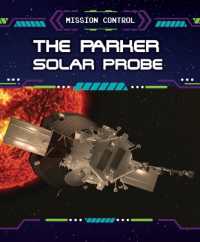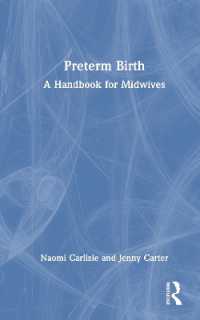Full Description
This Spanish language volume responds to the needs of Spanish speaking practitioners in the area of Second and Foreign Language Learning who are interested in integrating technologies in the classroom but may not be fluent readers of English. The volume offers a balance between chapters of pedagogic and of research nature which cover the main areas of technology-mediated communication, including different technologies, methodological perspectives and language learning goals in different educational settings. It provides a tool to encourage practitioners to engage students in virtual communication by offering examples of best practice and current research studies on the uses of computer-mediated communication for language learning that have been gathered from different countries, educational contexts and institutions.
Contents
Chapter 1. La comunicacion mediada por computador y su integracion en el aprendizaje de segundas lenguas / The Integration of Computer-mediated Communication in Second Language Learning
Margarita Vinagre and Marta Gonzalez-Lloret
Chapter 2. Escritura colaborativa en el siglo XXI / Collaborative Writing in the 21st Century
Ana Oskoz, University of Maryland, and Idoia Elola, Texas Tech University
Chapter 3. AICLE/EMI y CMC: Un tandem efectivo para el desarrollo de la interaccion comunicativa escrita / CLIC/EMI and CMC: An Effective Tandem to Develop Written Interaction
Maria Luisa Perez Canado, University of Jaen, Spain
Chapter 4. Telecolaboracion y creacion de relatos digitales: Una propuesta metodologica / Telecollaboration and Digital Story Creation: A Methodological Proposal
Ana Sevilla Pavon, Universitat de Valencia, Spain, and Ana Gimeno Sanz, Universidad Politecnica de Valencia, Spain
Chapter 5. La adquisicion de competencias para ingles profesional con la metodologia a distancia / The Acquisition of Professional English Competences in a Distance Learning Education Environment
Maria Jordano de la Torre and Pilar Rodriguez Arancon, both at Universidad Nacional de Educacion a Distancia
Chapter 6. Mundos virtuales en la ensenanza de lenguas: hacia un aprendizaje significativo a traves de la interaccion, la accion y el juego / Virtual Worlds in Language Education: Towards Meaningful Learning through Interaction, Action and Play
Kristi Jauregi and Silvia Canto, both at Utrecht University, Netherlands
Chapter 7. La complejidad linguistica en la comunicacion mediada por computadora / Linguistic Complexity in CMC
Karina Collentine, Northern Arizona University
Chapter 8. Episodios relacionados con la lengua segun el tipo de interlocutor en la comunicacion mediada por computadores / Language Related Episodes and Interlocutor Type in CMC
M Camino Bueno-Alastuey, Public University of Navarre
Chapter 9. Dinamicas de colaboracion eficaz en la comunicacion mediada por computador: Estudio de un caso de profesores en formacion a distancia / Effective Collaborative Dynamics in Computer-mediated Communication: A Case Study of Teacher Training in Distance Education
Margarita Vinagre
Chapter 10. `!Flipo con tus clases!': La formacion de profesorado en la didactica de lenguas a traves de clases invertidas y telecolaboracion / `Your Classes Flip Me Out!': The Training of Language Teachers through Flipped Classes and Telecollaboration
Melinda Dooly, Universitat Autonoma de Barcelona, Spain
Chapter 11. El desarrollo pragmatico en una segunda lengua a traves de la comunicacion mediada por tecnologias: Una vision panoramica / CMC L2 Pragmatic Development: An Overview
Marta Gonzalez-Lloret
Chapter 12. Direcciones de investigacion de la CMT para la del aprendizaje y ensenanza de lenguas extranjeras y segundas lenguas / Directions of CMC for Foreign and Second Language Teaching and Learning Research
Lourdes Ortega, Universidad de Georgetown








